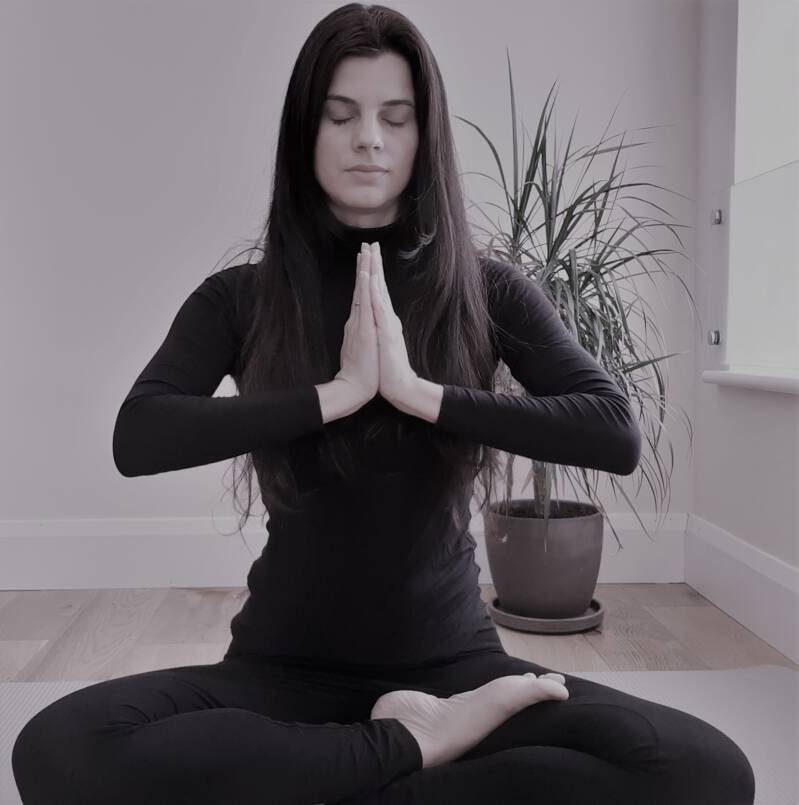Yoga and Meditation – The Vedic Way
Realization through Inner Harmony
What is Yoga?
Yoga (from Sanskrit “yuj”, meaning union) is the ancient Vedic discipline for achieving union of the individual soul (jivatma) with the Supreme Self (Paramatma). It was systematized by Maharshi Patanjali in the Yoga Sutras, forming the basis of Ashtanga Yoga – the eightfold path:
- Yama – Social Discipline
- Niyama – Self Discipline
- Asana – Physical postures
- Pranayama – Breath control
- Pratyahara – Withdrawal of senses
- Dharana – Focused attention
- Dhyana – Meditation (prolonged focus)
- Samadhi – Absorption into the Divine
“Yogaḥ citta-vṛtti-nirodhaḥ”
(Yoga is the withdrawal of attention from outside world) – Yoga Sutra 1.2
The Role of Meditation
Meditation (Dhyana) is the penultimate step before Samadhi. It is the uninterrupted focus toward a single object – ideally, the formless Brahman. This silent, inner practice purifies the mind and opens the door to Self-realization.
“Dhyana is the pathway to Ātma-jñāna – Identification of one’s true nature of Self.”
Regular meditation calms the mind, improves concentration, and brings joy independent of external conditions – a state called svarupananda in Vedantic texts.
Benefits of Yoga & Meditation
- Enhances physical flexibility and strength
- Balances the nervous system and endocrine glands
- Improves emotional stability and mental clarity
- Awakens intuitive intelligence
- Promotes inner peace and self-realization
Conclusion
Yoga and Meditation are not mere exercises but sacred sciences. Practiced rightly and with Vedic intent, they guide the seeker from bondage (embodiment) toward liberation (disembodiment). They help destroy the upādhis – the false identifiers – and lead to the eternal, unchanging Truth.
Yoga Retreat and Meditation Camps
Yoga Retreats and Meditation Camps, rooted in the Vedic tradition, serve as transformative environments that align body, mind, and soul through disciplined living, deep study, and spiritual reflection. Here are the key benefits:
1. Deepened Practice
In daily life, distractions often fragment one’s practice. A retreat offers immersive conditions:
-
Consistent āsana, prāṇāyāma, and dhyāna sessions
-
Guided instruction based on Yoga Sūtras and Upanishadic wisdom
-
Detoxification and physical alignment through daily routine (dinacharya)
2. Mental Clarity and Emotional Healing
By stepping away from daily stress, the manas (mind) becomes clearer. Through pratyāhāra (withdrawal of senses) and dhyāna:
-
Anxiety and restlessness diminish
-
Inner peace and sattva rise
-
Greater insight into thought patterns emerges
“शमः दमः उपरति तितिक्षा श्रद्धा समाधि”
Shama (calmness), dama (sense-control), uparati (withdrawal), titikṣā (endurance), śraddhā (faith), and samādhi (absorption) — all develop through retreat life.
3. Spiritual Awakening
Retreats reconnect us with ṛta—the Vedic cosmic order. Silent reflection and Vedic chanting awaken the viveka (discriminative power):
-
Helps in transcending ego and desires
-
Opens path toward mokṣa or liberation
-
Connects to deeper Self (ātman)
4. Community and Learning
A retreat fosters satsang—company of truth-seekers:
-
Exchange of ideas grounded in scripture
-
Mutual encouragement in brahmacharya (disciplined living)
-
Transmission of authentic teachings from experienced guides
5. Lifestyle Reset
Through Vedic routines:
-
Diet aligns with āyurveda (e.g., sāttvika food)
-
Circadian rhythms sync with nature
-
Habits of awareness, silence, and restraint form
In essence, yoga and meditation retreats re-align the individual with cosmic principles (Vedic Ṛta), cultivate mental discipline (niyama), and offer a sacred pause that transforms how we live and perceive reality.


